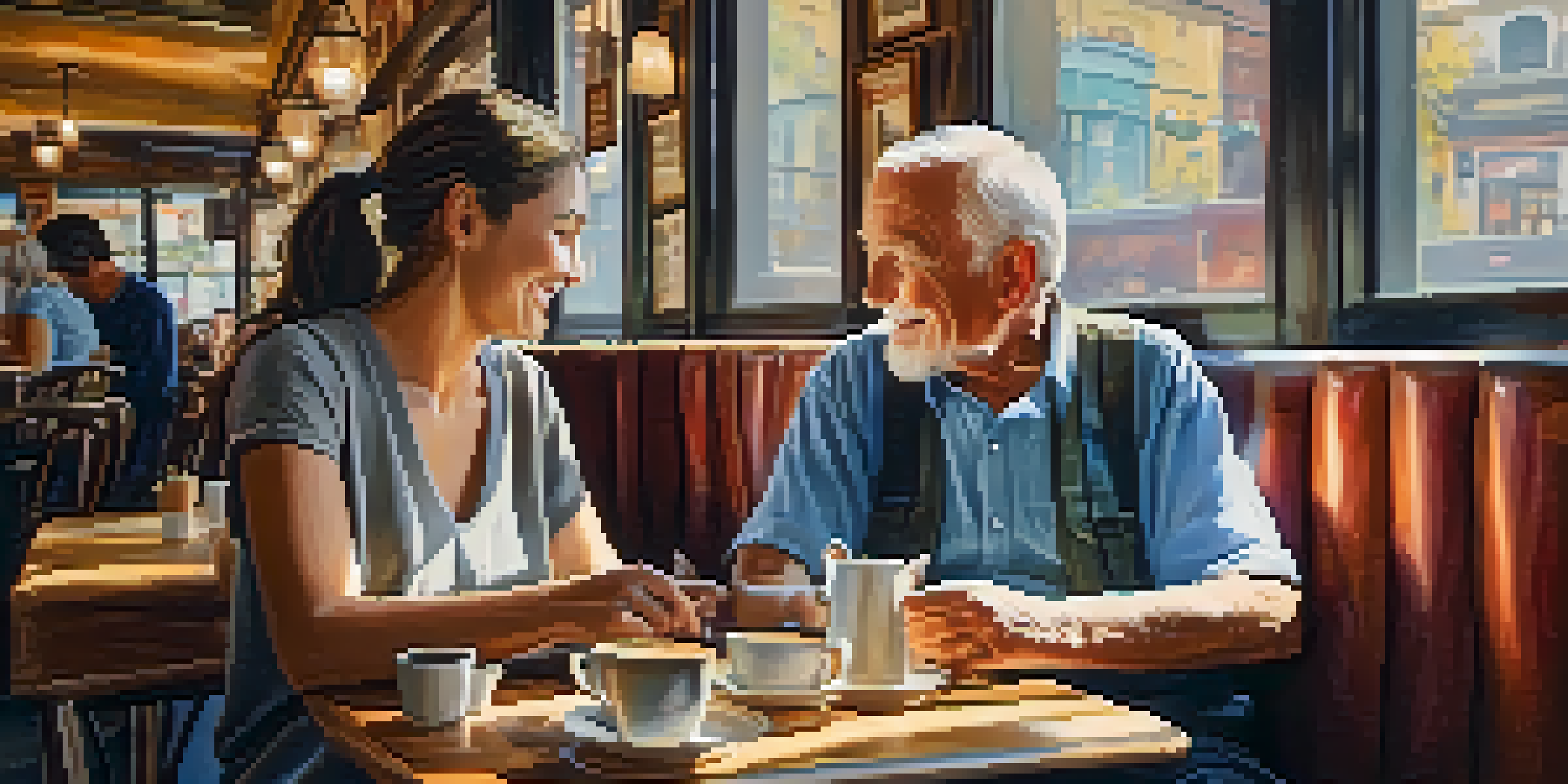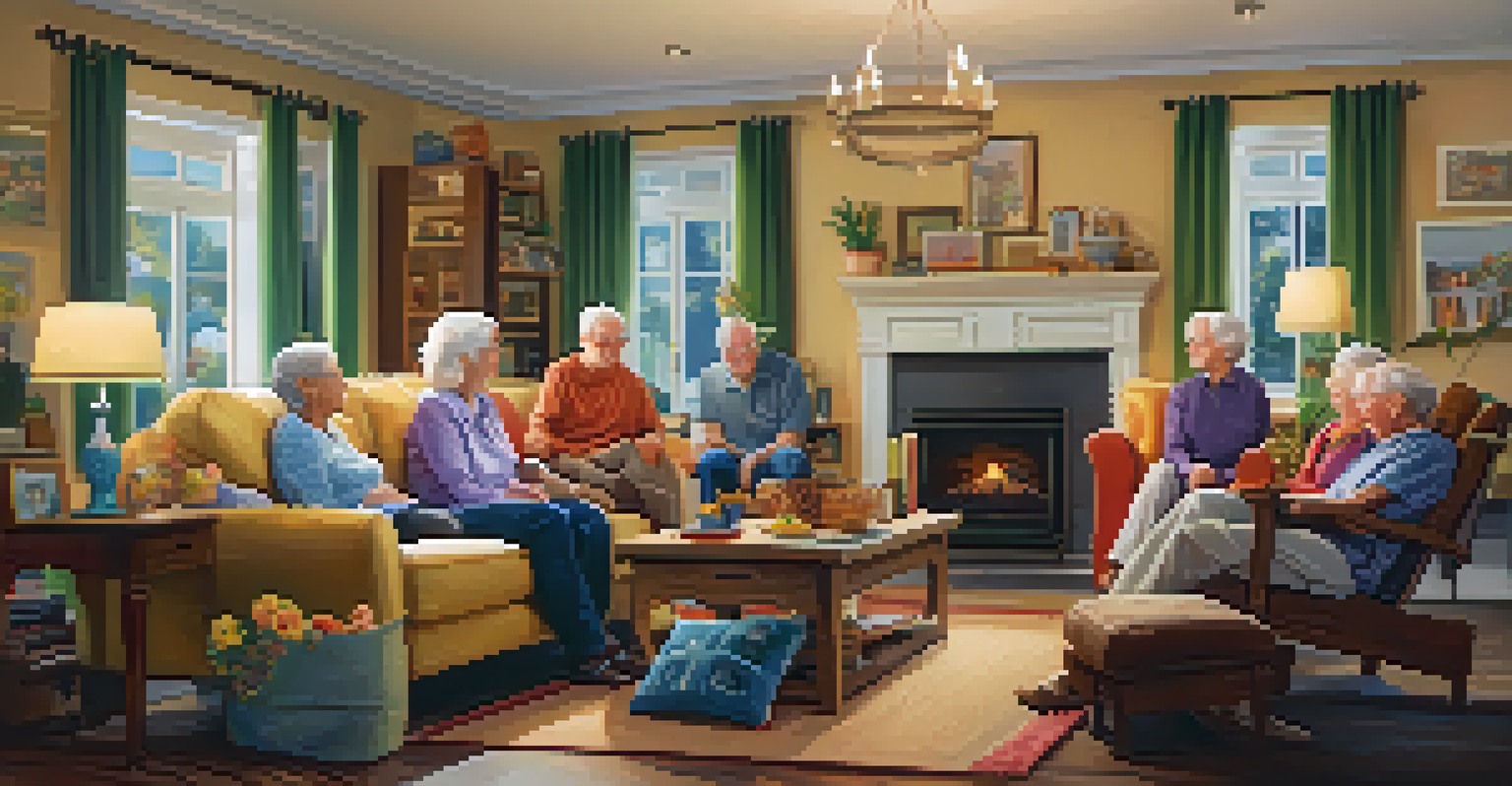The Power of Representation: Aging Characters in Film

Understanding Representation in Film and Its Importance
Representation in film is essential as it shapes our perceptions of various demographics. When audiences see characters that reflect their own experiences, it fosters a sense of belonging and understanding. This is particularly vital for aging characters, who often face stereotypes that can diminish their complexity.
The greatest gift of life is friendship, and I have received it.
Films that accurately portray aging individuals challenge these stereotypes, offering viewers a broader perspective on life’s later stages. By showcasing diverse experiences, filmmakers can highlight the richness of aging, thus promoting empathy and acceptance. This, in turn, encourages audiences to appreciate the wisdom and experiences that come with age.
Moreover, representation can inspire younger generations to view aging not as a decline but as a valuable chapter filled with potential. As we see more nuanced aging characters on screen, it reshapes societal attitudes, making the narratives surrounding aging more positive and relatable.
The Shift Towards More Authentic Aging Characters
In recent years, the film industry has begun to recognize the need for authentic aging characters. Historically, older roles were often relegated to stereotypes, such as the grumpy old man or the frail grandmother, which failed to capture the true diversity of aging experiences. However, this trend is changing as filmmakers seek to create more realistic portrayals.

For example, movies like 'The Best Exotic Marigold Hotel' feature older characters embarking on new adventures, showcasing resilience and vitality. Such narratives not only entertain but also encourage viewers to reconsider their perceptions of aging. By presenting aging characters in dynamic roles, filmmakers can redefine what it means to grow older.
Importance of Authentic Representation
Accurate portrayals of aging characters foster empathy, challenge stereotypes, and promote a positive view of aging.
This shift towards authenticity allows for richer storytelling, where the characters’ complexities and strengths shine through. As audiences engage with these stories, they may find themselves more inclined to appreciate the unique journeys of older individuals in their own lives.
Navigating Stereotypes: Challenges in Representation
Despite progress, the representation of aging characters still faces significant challenges. Stereotypes can be deeply ingrained, often leading to one-dimensional portrayals that do not reflect reality. This can result in older characters being overlooked or being given roles that lack depth and development.
Aging is not lost youth but a new stage of opportunity and strength.
Moreover, when filmmakers do attempt to break stereotypes, they sometimes fall into the trap of creating 'magical old people' who possess wisdom but lack relatability. This can alienate viewers who do not see the complexities of aging in these portrayals. It’s essential for filmmakers to strive for authenticity to truly connect with audiences.
To combat these challenges, filmmakers must prioritize diverse aging narratives that reflect the multifaceted nature of life. By doing so, they can create characters that resonate with audiences and foster greater understanding and acceptance of aging.
The Role of Aging Characters in Storytelling
Aging characters play a crucial role in storytelling, often serving as catalysts for change within narratives. Their experiences can provide wisdom, guidance, and perspective that younger characters may lack. This intergenerational dialogue enriches the overall storyline, creating a tapestry of experiences that resonate with a wide audience.
For instance, in films like 'A Walk in the Woods,' the aging protagonists embark on a journey that emphasizes friendship and self-discovery. These stories show that life doesn’t stop at a certain age; instead, it evolves, presenting new challenges and opportunities for growth. This theme is powerful, encouraging viewers to embrace their own journeys, regardless of age.
Challenges in Aging Portrayals
Stereotypes can lead to one-dimensional characters, necessitating a focus on diverse and relatable aging narratives.
By incorporating aging characters into the narrative framework, filmmakers can highlight the importance of legacy, mentorship, and shared human experiences. This not only enhances the storytelling but also fosters a sense of community among viewers of all ages.
Impact of Aging Characters on Audience Perception
The portrayal of aging characters can significantly influence audience perceptions of aging in real life. When viewers see relatable, active older characters, it can shift their understanding of what it means to grow older. This representation can help dismantle ageist attitudes that contribute to societal misconceptions about aging.
For instance, films that showcase older individuals pursuing passions or overcoming obstacles can inspire audiences to rethink their own beliefs about aging. They serve as powerful reminders that life continues to be full of possibilities, regardless of age. This shift in perception is vital for promoting a more inclusive society.
As audiences engage with these characters, they also begin to recognize the value of older generations in their own lives. This connection fosters respect and appreciation for the contributions of aging individuals, ultimately leading to a more compassionate view of aging.
Successful Examples of Aging Characters in Modern Cinema
There are several films that have successfully showcased aging characters in meaningful ways. Movies like 'Grandma' and 'The Intern' highlight the adventures and challenges faced by older individuals, portraying them as relatable and dynamic. These films not only entertain but also provoke thought on the complexities of aging.
Moreover, the success of these films demonstrates that audiences are eager to see diverse aging narratives. The positive reception of such stories encourages filmmakers to continue exploring the lives of older characters, further enriching the cinematic landscape. As these narratives gain traction, they contribute to a broader cultural shift towards valuing aging experiences.
Future of Aging Characters in Film
Embracing authenticity and collaboration with older creators can pave the way for richer, more inclusive storytelling about aging.
By continuing to produce films that focus on the lives of aging characters, the industry can pave the way for more inclusive storytelling. Such examples serve as beacons of hope, showing that aging can be portrayed with dignity, humor, and depth.
Looking Ahead: The Future of Aging Characters in Film
As society evolves, so too must the representation of aging characters in film. The growing demand for authenticity and diversity provides a unique opportunity for filmmakers to explore new narratives. This is an exciting prospect, as it opens the door for fresh perspectives on aging that have yet to be fully realized.
Filmmakers are encouraged to collaborate with older actors and writers to ensure that the stories told are genuine and resonate with audiences. By involving those who have lived the experiences being portrayed, filmmakers can create more authentic and relatable characters. This collaboration can lead to narratives that reflect the true essence of aging.

Ultimately, the future of aging characters in film lies in the hands of creators willing to challenge conventions and embrace the richness of aging narratives. By continuing to push boundaries, the industry can cultivate a more inclusive and representative cinematic world that celebrates the beauty of every life stage.